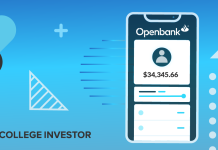- The SAVE repayment plan remains in legal limbo, and borrowers are in administrative forbearance while the court weighs its future.
- The reconciliation bill advancing in Congress would eliminate SAVE and move borrowers into a version of IBR.
- The timing of repayment for SAVE borrowers is possible in late 2025, but more likely by mid-2026.
The future of student loan repayment for SAVE borrowers is now caught between a pending court ruling and a fast-moving budget bill. Borrowers in administrative forbearance under the SAVE (Saving on a Valuable Education) plan are watching both carefully, unsure whether they’ll keep their current plan, be automatically placed into a revised repayment structure, or need to select something entirely different.
Three distinct scenarios are now on the table:
- The court voids SAVE before Congress acts: The Department of Education would have to do rule-making to provide SAVE plan borrowers new options.
- Congress acts first and passes the budget bill with RAP: SAVE would be eliminated and borrowers shifted into the amended IBR plan.
- The court upholds SAVE entirely: The plan would resume as designed, though that outcome appears least likely. However, if the budget bill with RAP passes, even if SAVE is upheld, the plan ends ayway due to the rules of the new reconciliation bill.
The result will determine when borrowers resume payments and what repayment plan they’ll be in. The fastest option could see payments start again this fall, though it’s the least likely. The highest probability of payments resuming is mid-2026 for SAVE plan borrowers.
Here’s a more in-depth look at these three scenarios.
Option 1: Court Rules Before Congress Passes RAP
If the court rules soon and blocks SAVE entirelythe Department of Education would be forced to discontinue the plan and shift borrowers to other available repayment options allowed at the time (since RAP is not law). This could happen before Congress passes RAP, or in the scenario that Congress never passes RAP.
This would likely require a new round of borrower communications and system updates, informing affected individuals that they must choose between remaining IDR plans such as IBR or PAYE.
The department would likely offer a temporary grace period or administrative forbearance while applications are processed, but full repayment would resume only after borrowers are placed into an alternative plan. However, there could be a scenario where, if borrowers don’t select a new plan by a certain date, they will default back into the Standard 10-year plan (then move to default if they still don’t take action).
If rule-making is needed to address gaps left by SAVE’s removal, such as recalculating payments or clarifying forgiveness timelines, the process could take 6 to 12 months, with payments resuming in mid to late 2026.
During this period, Congress could still pass the RAP proposal and override the court’s outcome by creating a new statutory plan.
The timeline would look like:
- Review the court decision and confirm SAVE’s reinstatement (1 – 2 weeks)
- Notify borrowers and update StudentAid.gov (2 – 4 weeks)
- Coordinate with loan servicers to update systems and recalculate payments (1 – 3 months)
- New rule-making period (6 – 12 months)
- Transition borrowers back into repayment with billing notices and due dates (3 – 6 months)
Assuming no rule changes are required, repayment could resume within 6 to 9 monthsbut the likely timeline is 12 to 18 monthsputting repayment resuming in mid 2026. This also aligns with the SAVE forbearance extensions we’re seeing, with many borrowers reporting dates in mid to late 2026.
Option 2: Congress Passes RAP
The pending Republican-backed budget bill includes the “RAP” proposal, short for the “Repayment Assistance Plan”. Under its current language, all borrowers in an income-contingent plan or administrative forbearance associated with one (including SAVE) would be moved into a revised IBR plan.
According to the bill (PDF File), this transition would begin within 6 months after bill is signed into lawnot July 2026, as earlier drafts had suggested. Given that the goal is to have the budget bill signed into law by June 30, 2025, this means that the transition could happen by December 2025.
The current language even calls out borrowers in administrative forbearance:
“The Secretary of Education shall take such steps as necessary to apply the repayment plan to each borrower, who, on the day before such date of enactment, is in a repayment status in accordance with, or an administrative forbearance associated with, an income-contingent repayment plan…”
Since SAVE is a student loan repayment plan based on income-contingent repayment, borrowers enrolled in the plan or the associated administrative forbearance would simply be moved to amended IBR.
If Congress enacts the bill before the court rules, the legal battle over SAVE may become irrelevant. Borrowers would bypass a return to SAVE entirely and instead land in amended IBR. The department would likely halt any SAVE-related updates and immediately focus on reconfiguring servicer systems and messaging.
That rollout could begin as soon as fall 2025depending on how fast Congress moves. Repayment under amended IBR could begin by late 2025 or early 2026but earlier is possible.
While the bill currently reads “as early as practical but no later than 6 months”, it’s very possible that 6 months could be the starting point of the move, and the move would still last until mid-2026. Especially with limited resources at the Department of Education.
We don’t view it likely that borrowers who’ve already been told they are in forbearance until mid-2026 would see that timeline shortened. When you also combine that with the logistical workload required to migrate 7-8 million student loan borrowers in SAVE, again, mid-2026 seems more realistic. But the law reads that this could resume payments as early as late 2025.
The timeline would look like:
- Review the final bill and decide if any rule-making is needed (1 – 2 weeks)
- Notify borrowers and update StudentAid.gov (2 – 4 weeks)
- Coordinate with loan servicers to update systems and setup amended IBR (1 – 3 months)
- Transition existing borrowers back into repayment on amended IBR with billing notices and due dates (3 – 6 months)
- Rule-making for RAP to start (6 – 12 months)
- RAP goes live in July 2026

Option 3: SAVE Is Upheld
While unlikely, it remains possible the court could uphold SAVE in its current form. In that case, the Department of Education could resume the plan with no new rule-making. This would trigger the fastest return to repayment, with borrowers likely seeing bills in summer or fall 2025.
However, given the political climate and pressure to rewrite repayment policy, most expect either the court will strike down SAVE, or Congress will move faster to repeal it outright.
Even if the court upholds SAVE, if Congress were to pass RAP a month or two later, then the RAP protocol will take place moving borrowers out of SAVE and into amended IBR. This would go back to the Option 2 scenario above.
What Happens During The Wait?
Both the court and Congress have left a gap in timing. Borrowers are still in administrative forbearance, and the Department of Education hasn’t issued updates. We are seeing many borrowers report that their SAVE forbearance dates range from August 2025 all the way until September 2026 – with many reporting dates moving still.
If neither branch acts quickly, borrowers could remain in limbo for months, with payments and interest paused.
Regardless, the 7 to 8 million borrowers in SAVE will have to make some decisions with their loans in the next six to twelve months. As the budget bill moves through Congress, it seems more and more likely that the choice will be between amended IBR and RAP.
However, if RAP doesn’t pass, it’s still likely the SAVE plan is over, and borrowers will have to choose one of the existing IDR plans (IBR, PAYE, or ICR) in the next year.
Don’t Miss These Other Stories:
“No Tax On Tips” Bill Clears Senate With Zero Opposition
Student Loan Reform May Increase Payments For Borrowers
Congress Moves Forward Changes To Student Loans And More
Create your very own Auto Publish News/Blog Site and Earn Passive Income in Just 4 Easy Steps







